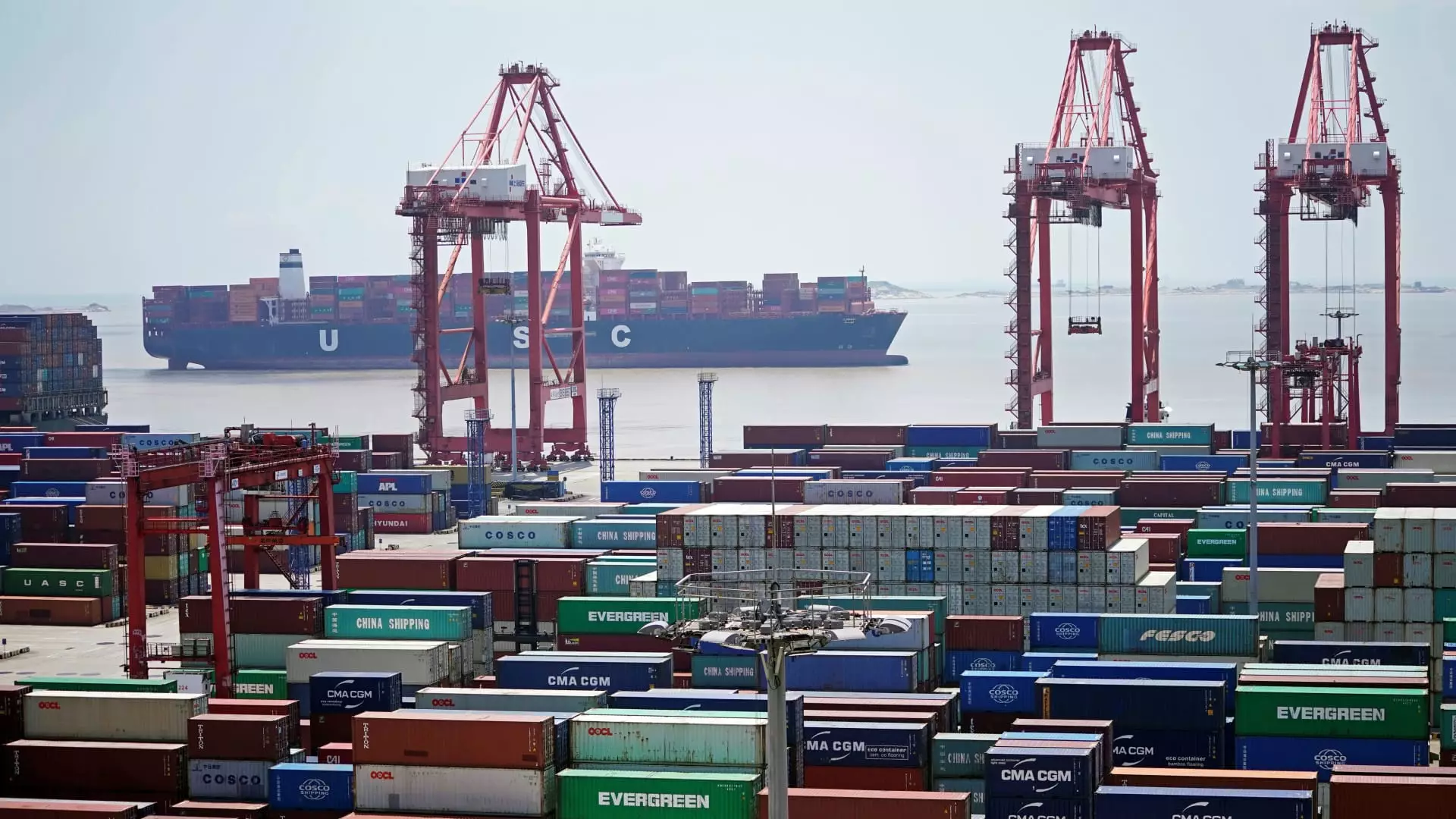China, the world’s second-largest economy, experienced a significant decline in its annual exports in 2023. This downturn was noteworthy as it marked the first time in seven years that exports had fallen. While December’s shipment numbers managed to surpass expectations, this positive performance was unable to offset the overall decline in exports. According to customs data, exports increased by 2.3% in U.S. dollar terms, while imports rose by 0.2% in December compared to the previous year. However, the annual figures revealed a more concerning picture, with exports plummeting by 4.6% and imports dropping by 5.5% in 2023.
China’s trade with its major partners experienced a decline as global demand for Chinese goods weakened in the face of slower global growth. In 2023, the Association of Southeast Asian Nations emerged as China’s largest trading partner within the region, followed closely by the European Union. On a country level, the United States remained China’s largest trading partner. However, Russia stood out as a bright spot, with Chinese exports to the country soaring by nearly 47% in 2023, accompanied by a notable 13% increase in imports.
Despite the decline in exports, Chinese manufacturers expressed optimism about the future. “Chinese manufacturers anticipate production to rise over the course of 2024 amid forecasts of firmer global demand, higher client spending, and new product investment,” reported Caixin. While their December manufacturing purchasing managers’ index showed mild improvement, the level of optimism remained below the series average. The report also revealed a decline in the employment sub-index, with firms choosing not to replace voluntary leavers or reduce headcounts in response to subdued demand.
Macquarie’s Chief China Economist Larry Hu echoed this sentiment in a report, stating that their base case forecast predicted a 2% increase in exports for 2024 after the 5% decrease in 2023. Hu further noted that if exports were to slow down even more than expected, policymakers would likely adopt a more proactive approach in terms of domestic policy supports.
China’s economy, which experienced a slower-than-expected recovery from the COVID-19 pandemic, is estimated to have concluded 2023 with approximately 5% growth. However, while exports were a driving force for the country’s growth, they were not sufficient to boost overall domestic demand. Weak domestic demand compelled competitive Chinese firms to expand in the global market, helping to contain inflation worldwide. Nonetheless, this avenue for growth was reliant on fiscal policy expansion.
The decline in China’s crude oil demand by 7.7% in 2023 indicates the challenges the nation faced. However, this decline was less severe than the previous month’s drop of 8.1%. On a positive note, there was an increase in the import of integrated circuits in December. While exports in most product categories experienced a decline, with machinery and home appliances being no exception, the automotive industry stood out as a bright spot. China’s auto exports surged by 69% in 2023, with electric cars and demand from Russia playing a significant role in this growth. China is expected to have surpassed Japan as the world’s largest exporter of cars in 2023, largely due to the contribution of Chinese manufacturers filling the void left by others after Russia’s invasion of Ukraine.
China’s export decline in 2023 served as a wake-up call, putting an end to seven consecutive years of growth. The nation faced challenges from weaker global demand and slower economic growth. While December showed some signs of improvement, the overall decline for the year was significant. However, Chinese manufacturers remain cautiously optimistic about the future, anticipating an increase in production in 2024. It is crucial for policymakers to consider proactive domestic policy supports in the event of further export slowdowns. With challenges come opportunities, and China must leverage its strengths, such as the automotive market and trading relationships with partners like Russia, to bolster its economic growth and drive domestic demand.


Leave a Reply